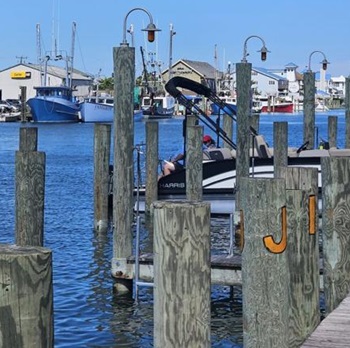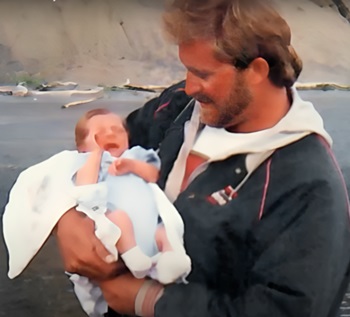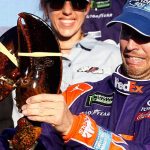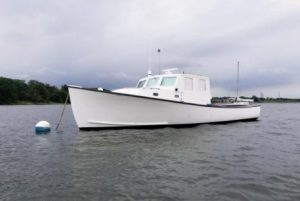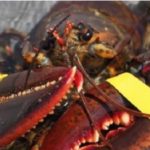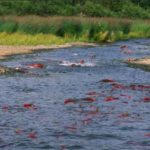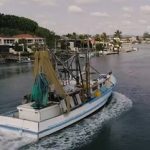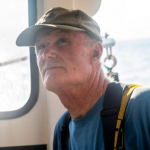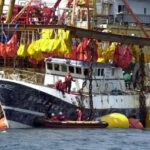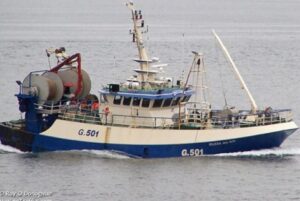Category Archives: International
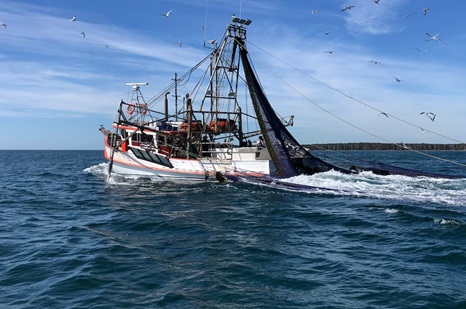
NSW fisheries officers demand stab-proof vests and capsicum spray in order to do their job safely
Fisheries officers are calling for the right to use capsicum spray and wear stab-proof vests after run-ins with illegal poachers and criminal gangs. They are also refusing to carry out night inspections of trawlers without police assistance. Supervising fisheries officer Joe Wright knows too well the dangers of confronting a fisherman suspected of an illegal catch. Mr Wright is one of dozens of fisheries officers in New South Wales who have been threatened with assault while on the job, protecting oceans, rivers and estuaries. These officers are now demanding stab-proof vests and capsicum spray, amid fears workers are at risk of being hurt or even killed. The union representing the officers says they are unsafe and “operationally ineffective” when coming face-to-face with poachers and organised criminals. Photos, more, >>CLICK TI READ<< 17:18
Harsh verdict on post-Brexit ‘sea of opportunity’
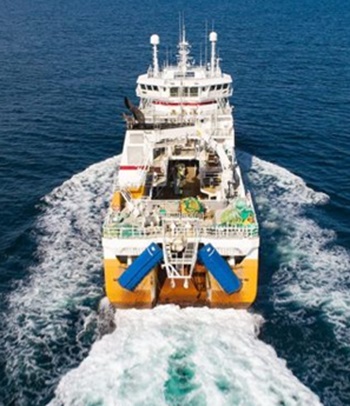 UK Fisheries operates the Hull freezer trawler Kirkella, having taken trawlers Norma Mary and Farnella out of service due to the lack of fishing opportunities, laying off the majority of their crews. ‘Not only has this had a devastating impact on them and their families, it has also dealt a severe blow to the social and economic fabric of the Humberside region,’ a UK Fisheries representative commented, referring to what the company refers to as ‘the abject failure of the fisheries policy of the previous administration.’ more, >>CLICK TO READ<< 08:09
UK Fisheries operates the Hull freezer trawler Kirkella, having taken trawlers Norma Mary and Farnella out of service due to the lack of fishing opportunities, laying off the majority of their crews. ‘Not only has this had a devastating impact on them and their families, it has also dealt a severe blow to the social and economic fabric of the Humberside region,’ a UK Fisheries representative commented, referring to what the company refers to as ‘the abject failure of the fisheries policy of the previous administration.’ more, >>CLICK TO READ<< 08:09
Maine’s massive “floating wind” folly — my report
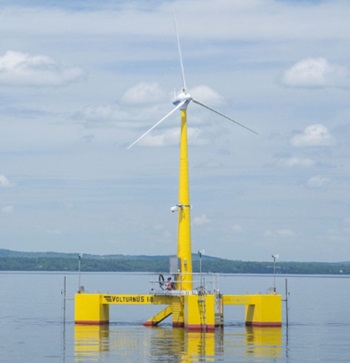 Below is my Executive Summary, followed by the latest bad news on this ongoing silly saga. This report examines several fundamental aspects of the State of Maine’s offshore wind development plan. It is divided into two parts. Part 1 examines certain economic issues, such as feasibility, cost, and progress to date. Part 2 explores the proposed development as it relates to the entire Gulf of Maine, namely because the project has not advanced to the point where the State of Maine’s responsibilities have been defined. The offshore wind plan calls for development of 3,000 MW of generating capacity, an amount that is roughly double Maine’s average electricity usage. The viability of Maine’s offshore wind plan depends entirely on the massive transformation of the state’s grid from fossil fuel use to electrification. It is clear that the citizens of Maine have not been informed of this vast transformation requirement. They have certainly not approved it. more, >>CLICK TO READ<< 09:34
Below is my Executive Summary, followed by the latest bad news on this ongoing silly saga. This report examines several fundamental aspects of the State of Maine’s offshore wind development plan. It is divided into two parts. Part 1 examines certain economic issues, such as feasibility, cost, and progress to date. Part 2 explores the proposed development as it relates to the entire Gulf of Maine, namely because the project has not advanced to the point where the State of Maine’s responsibilities have been defined. The offshore wind plan calls for development of 3,000 MW of generating capacity, an amount that is roughly double Maine’s average electricity usage. The viability of Maine’s offshore wind plan depends entirely on the massive transformation of the state’s grid from fossil fuel use to electrification. It is clear that the citizens of Maine have not been informed of this vast transformation requirement. They have certainly not approved it. more, >>CLICK TO READ<< 09:34
Editorial: Save commercial fishing industry
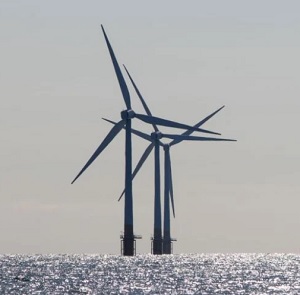 Commercial fishing operators working out of the harbor in West Ocean City have been cast adrift, as the push to build an offshore wind farm about 12 miles east of Ocean City has rolled over their concerns. As was noted in a meeting Tuesday between Department of Natural Resources officials and commercial fishing operators, the construction of a maintenance facility at the commercial harbor could leave the few boats still operating there without space to unload their catch. No one, outside of the fishing community itself, apparently thought of that problem and one suspects that the state and federal governments would advise members of that industry to produce their own solution, which they don’t have the resources to do. more, >>CLICK TO READ<< 06:35
Commercial fishing operators working out of the harbor in West Ocean City have been cast adrift, as the push to build an offshore wind farm about 12 miles east of Ocean City has rolled over their concerns. As was noted in a meeting Tuesday between Department of Natural Resources officials and commercial fishing operators, the construction of a maintenance facility at the commercial harbor could leave the few boats still operating there without space to unload their catch. No one, outside of the fishing community itself, apparently thought of that problem and one suspects that the state and federal governments would advise members of that industry to produce their own solution, which they don’t have the resources to do. more, >>CLICK TO READ<< 06:35
New Jersey hits pause on an offshore wind farm that can’t find turbine blades
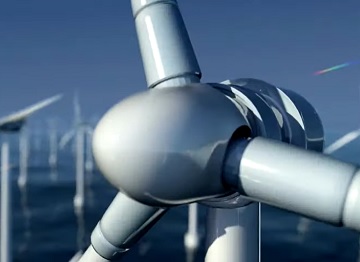 New Jersey hit the pause button Wednesday on an offshore wind energy project that is having a hard time finding someone to manufacture blades for its turbines. The New Jersey Board of Public Utilities granted Leading Light Wind a pause on its project through Dec. 20 while its developers seek a source for the crucial components. The project, from Chicago-based Invenergy and New York-based energyRE, would be built 40 miles (65 kilometers) off Long Beach Island and would consist of up to 100 turbines, enough to power 1 million homes. Leading Light was one of two projects that the state utilities board chose in January. But just three weeks after that approval, one of three major turbine manufacturers, GE Vernova, said it would not announce the kind of turbine Invenergy planned to use in the Leading Light Project, according to the filing with the utilities board. more, >>CLICK TO READ<< 08:23
New Jersey hit the pause button Wednesday on an offshore wind energy project that is having a hard time finding someone to manufacture blades for its turbines. The New Jersey Board of Public Utilities granted Leading Light Wind a pause on its project through Dec. 20 while its developers seek a source for the crucial components. The project, from Chicago-based Invenergy and New York-based energyRE, would be built 40 miles (65 kilometers) off Long Beach Island and would consist of up to 100 turbines, enough to power 1 million homes. Leading Light was one of two projects that the state utilities board chose in January. But just three weeks after that approval, one of three major turbine manufacturers, GE Vernova, said it would not announce the kind of turbine Invenergy planned to use in the Leading Light Project, according to the filing with the utilities board. more, >>CLICK TO READ<< 08:23
Right whales and offshore wind: reflections on an uneasy coexistence
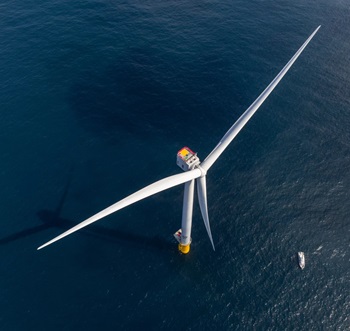 Michael Moore has spent decades studying North Atlantic right whales. He’s seen somewhere around 150 of them. It’s a feat, given that now there are just about 360 left in the world. But the veterinarian, author, and scientist emeritus from the Woods Hole Oceanographic Institution had never seen an offshore wind farm up close — until last week. “Look at them. All out in neat little rows,” he said, standing at the rear of a 53-foot charter boat that offered a closeup view of construction on Vineyard Wind, 15 miles south of Martha’s Vineyard. About half of the planned 62 turbines are fully constructed, reaching more than 250 meters into the sky. When the boat slowed down to pass beneath one of the turbines, Moore was awestruck by the length of a blade. “Right whales are 40 to 50 feet,” he said. “So, you can stretch seven right whales along the length of one of these blades.” Photos, more, >>CLICK TO READ<< 16:48
Michael Moore has spent decades studying North Atlantic right whales. He’s seen somewhere around 150 of them. It’s a feat, given that now there are just about 360 left in the world. But the veterinarian, author, and scientist emeritus from the Woods Hole Oceanographic Institution had never seen an offshore wind farm up close — until last week. “Look at them. All out in neat little rows,” he said, standing at the rear of a 53-foot charter boat that offered a closeup view of construction on Vineyard Wind, 15 miles south of Martha’s Vineyard. About half of the planned 62 turbines are fully constructed, reaching more than 250 meters into the sky. When the boat slowed down to pass beneath one of the turbines, Moore was awestruck by the length of a blade. “Right whales are 40 to 50 feet,” he said. “So, you can stretch seven right whales along the length of one of these blades.” Photos, more, >>CLICK TO READ<< 16:48
Fishing group, N.S. fisherman happy with Canada-France halibut deal
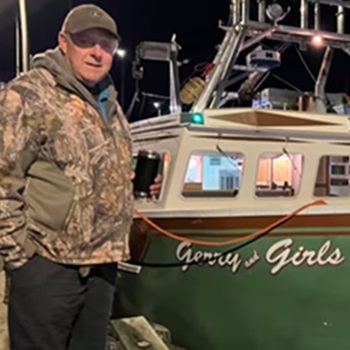 Canada and France have reached a deal to try to end a long-simmering dispute over halibut fishing on Canada’s Atlantic coast. In exchange for a three per cent share of the Canadian quota, French fishing vessels will fish outside Canadian waters and agree to have their catch monitored. According to Shelburne fisherman Gary Dedrick, French fishermen have been harvesting in Canadian waters outside the designated French fishing zone surrounding St-Pierre-Miquelon, France’s eight small islands off Newfoundland’s southern coast, and not limiting their catches. “They will be allowed to fish Atlantic halibut in their own territory and also outside 200 miles, but they won’t be able to fish in Canadian waters,” said Lapointe, who is looking to federal authorities to increase monitoring and catch reporting now that there’s a formal agreement. more, >>CLICK TO READ<< 14: 19
Canada and France have reached a deal to try to end a long-simmering dispute over halibut fishing on Canada’s Atlantic coast. In exchange for a three per cent share of the Canadian quota, French fishing vessels will fish outside Canadian waters and agree to have their catch monitored. According to Shelburne fisherman Gary Dedrick, French fishermen have been harvesting in Canadian waters outside the designated French fishing zone surrounding St-Pierre-Miquelon, France’s eight small islands off Newfoundland’s southern coast, and not limiting their catches. “They will be allowed to fish Atlantic halibut in their own territory and also outside 200 miles, but they won’t be able to fish in Canadian waters,” said Lapointe, who is looking to federal authorities to increase monitoring and catch reporting now that there’s a formal agreement. more, >>CLICK TO READ<< 14: 19
Debate Over Offshore Wind Farms Continues at Ocean City BOEM Meeting
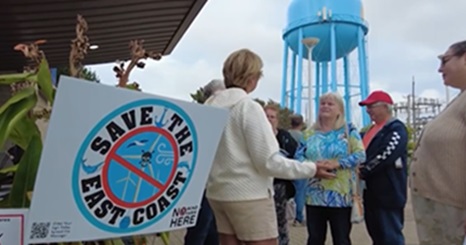 Ocean City residents voiced strong opposition Tuesday night at a public meeting hosted by the Bureau of Ocean Energy Management (BOEM) regarding potential offshore wind farm developments along the Maryland coast. The meeting discussed areas that could be leased for wind energy projects, which has been raising concerns among residents. Many Ocean City residents expressed concerns about the environmental, economic, and aesthetic impact of more wind farms. Hundreds attended the meeting. “It’s just not sound business. It’s not a good idea for our environment. The fishery will be destroyed out here, the viewshed will be destroyed, and it’s going to harm Ocean City—irreparable harm to our community,” said one attendee. Video, more, >>CLICK TO READ<< 08:41
Ocean City residents voiced strong opposition Tuesday night at a public meeting hosted by the Bureau of Ocean Energy Management (BOEM) regarding potential offshore wind farm developments along the Maryland coast. The meeting discussed areas that could be leased for wind energy projects, which has been raising concerns among residents. Many Ocean City residents expressed concerns about the environmental, economic, and aesthetic impact of more wind farms. Hundreds attended the meeting. “It’s just not sound business. It’s not a good idea for our environment. The fishery will be destroyed out here, the viewshed will be destroyed, and it’s going to harm Ocean City—irreparable harm to our community,” said one attendee. Video, more, >>CLICK TO READ<< 08:41
Athearn Marine Agency Boat of the Week: 36′ Wayne Beal Lobster Boat, 675HP, Scania D1-13 086M Diesel, Video
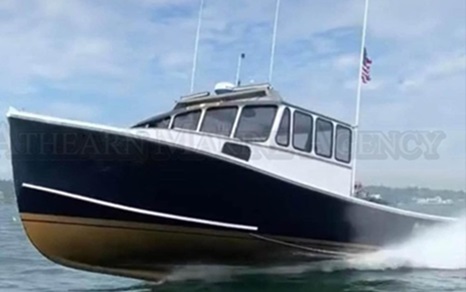 To review specifications, information, and 10 photos’, and Video, >click here< To see all the boats in this series, >click here< 06:09
To review specifications, information, and 10 photos’, and Video, >click here< To see all the boats in this series, >click here< 06:09
Canada announces deal with France on contentious Atlantic halibut fishery
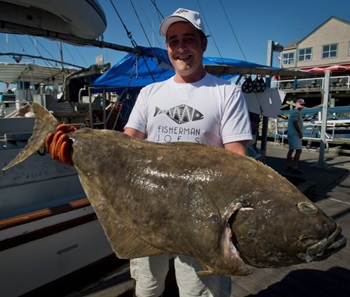 Months of negotiations have resulted in an agreement between Canada and France allowing fishers from a tiny archipelago near Newfoundland a portion of the annual Atlantic halibut catch, officials announced Monday. Fishers from the French territory of St-Pierre-Miquelon will be allowed three per cent of the total allowable catch, which is set each year by Canada, the federal Fisheries Department said in a statement. Ihe department has been working with France to reach such an agreement since 2016, the department said. “I am confident that we’ve reached an equitable agreement that will ensure the long-term health of the Atlantic halibut stock while supporting the economies and coastal communities of both Canada and France,” Fisheries Minister Diane Lebouthillie said. more, CLICK TO READ<< 15:02
Months of negotiations have resulted in an agreement between Canada and France allowing fishers from a tiny archipelago near Newfoundland a portion of the annual Atlantic halibut catch, officials announced Monday. Fishers from the French territory of St-Pierre-Miquelon will be allowed three per cent of the total allowable catch, which is set each year by Canada, the federal Fisheries Department said in a statement. Ihe department has been working with France to reach such an agreement since 2016, the department said. “I am confident that we’ve reached an equitable agreement that will ensure the long-term health of the Atlantic halibut stock while supporting the economies and coastal communities of both Canada and France,” Fisheries Minister Diane Lebouthillie said. more, CLICK TO READ<< 15:02

Le Canot – French owner welcomes new scallop trawler to fleet
The custom-built Le Canot (“The Canoe”) has a length of 11.9 metres (39 feet), a beam of five metres (16 feet), a gross tonnage of 18, a total installed power of 184 kW (247 hp), and a hybrid design consisting of a monohull bow combined with a catamaran stern for stability. This design was developed by Plastimer’s founders and directors, husband and wife Jean-Bernard and Monique Furstenberger, in close cooperation with L’Écume owner and boat skipper Nicolas Erhel. Photos, specifications, more, >>CLICK TO READ<< 12:07
Urgent MAIB warning following MOB fatality
 The Marine Accident Investigation Branch (MAIB) has issued a safety bulletin following the fatal accident onboard the 18.35m crabber Kingfisher DH 110 (FN, 25 July, ‘Fatal MOB from Dartmouth crabber’). The bulletin urges the Home and Dry Safety Forum to immediately communicate through its members the need for owners and crew of potting vessels to review their deck working risk assessments. The Kingfisher tragedy, which occurred 30nm east-north-east of Wick on 12 July this year, saw a deckhand become attached to the backrope and be pulled overboard while manually toggling on creels. The deckhand’s PFD automatically inflated, and he initially surfaced, leading the crew to believe he was clear of the backrope and floating freely. more, >>CLICK TO READ<< 10:06
The Marine Accident Investigation Branch (MAIB) has issued a safety bulletin following the fatal accident onboard the 18.35m crabber Kingfisher DH 110 (FN, 25 July, ‘Fatal MOB from Dartmouth crabber’). The bulletin urges the Home and Dry Safety Forum to immediately communicate through its members the need for owners and crew of potting vessels to review their deck working risk assessments. The Kingfisher tragedy, which occurred 30nm east-north-east of Wick on 12 July this year, saw a deckhand become attached to the backrope and be pulled overboard while manually toggling on creels. The deckhand’s PFD automatically inflated, and he initially surfaced, leading the crew to believe he was clear of the backrope and floating freely. more, >>CLICK TO READ<< 10:06
Lawmakers seek pause in offshore wind energy amid whale deaths
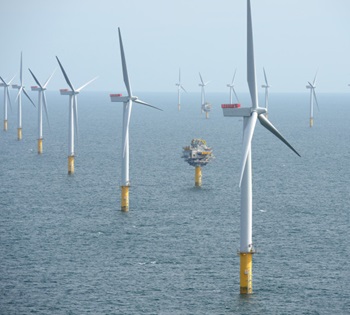 House lawmakers are seeking a pause in offshore wind energy projects amid a string of whale deaths along the coasts of Maryland, New York, New Jersey and Maine. Last week, a deceased whale beached off Maryland’s coast, the second whale carcass discovered in the area in three weeks. In 2023, 37 humpback whales carcasses were discovered along the East Coast. Rep. Andy Harris (R-Md.) hosted a public hearing in August in which experts testified about the danger installing wind turbines poses marine wildlife. Harris called for an end to offshore wind energy in Maryland. The Government Accountability Office plans to investigate the impacts of offshore wind development after Rep. Chris Smith (R-N.J) requested it look into the issues. more, >>CLICK TO READ<< 06:48
House lawmakers are seeking a pause in offshore wind energy projects amid a string of whale deaths along the coasts of Maryland, New York, New Jersey and Maine. Last week, a deceased whale beached off Maryland’s coast, the second whale carcass discovered in the area in three weeks. In 2023, 37 humpback whales carcasses were discovered along the East Coast. Rep. Andy Harris (R-Md.) hosted a public hearing in August in which experts testified about the danger installing wind turbines poses marine wildlife. Harris called for an end to offshore wind energy in Maryland. The Government Accountability Office plans to investigate the impacts of offshore wind development after Rep. Chris Smith (R-N.J) requested it look into the issues. more, >>CLICK TO READ<< 06:48
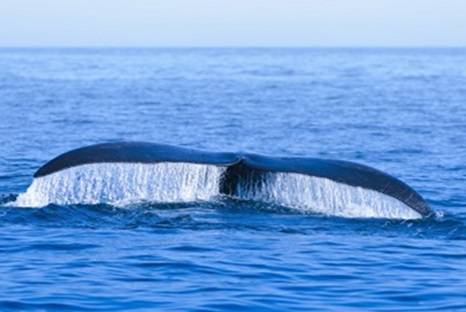
International Whaling Commission meets this week, will they discuss the US whale slaughter? By Jim Lovgren
The International Whaling Commission [IWC] meets this week from September 23 rd to the 27 th , in Lima Peru. The commission was established in 1946 and is a specialized regional fishery management organization created to provide for the proper conservation of various different Whale species, with the goal of supporting the orderly development of the Whaling industry. For two hundred years fishing vessels hunted down Whales bringing some species to the brink of extinction. Unlike the American slaughter of Buffalo, where they were killed solely for their hide, and the carcass left to rot, the Whaling industry utilized almost every part of these animals, with many indigenous populations being dependent on them as their main food source. This brings us to the present marine mammal slaughter being perpetrated by multi-national wind companies along the US east coast. In 2016 NOAA declared an unusual marine mammal mortality event was taking place with Humpback, Minke, and Northern Right Whales. Around that time research and construction was started on the Block Island wind project. more, >>CCLICK TO READ<< 16:11
Proposed wind farms ‘devastating’ for fishers
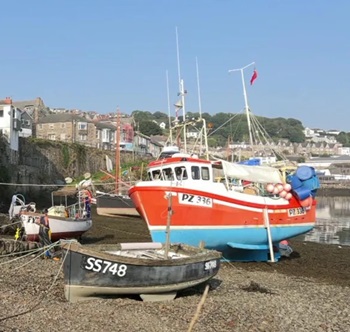 Proposals to expand planned wind farm sites off the Devon and Cornwall coast could devastate the fishing industry, fishermen have warned. It comes after the Crown Estate, which owns the sea bed, published its latest map of potential development zones. It includes thousands of square miles off Land’s End and the Isles of Scilly, currently prime fishing grounds, and an expanded zone off north Devon. Dave Stevens, who has fished off Newlyn for 30 years, said new offshore wind development would not be good for the industry. “It would be a devastating blow if that went ahead,” he said. “Everyone would be wanting to get out. “I don’t think the industry has been this challenged ever.” more, >>CLICK TO READ<< 08:35
Proposals to expand planned wind farm sites off the Devon and Cornwall coast could devastate the fishing industry, fishermen have warned. It comes after the Crown Estate, which owns the sea bed, published its latest map of potential development zones. It includes thousands of square miles off Land’s End and the Isles of Scilly, currently prime fishing grounds, and an expanded zone off north Devon. Dave Stevens, who has fished off Newlyn for 30 years, said new offshore wind development would not be good for the industry. “It would be a devastating blow if that went ahead,” he said. “Everyone would be wanting to get out. “I don’t think the industry has been this challenged ever.” more, >>CLICK TO READ<< 08:35
Big Fish Offshore Wind Producers Catch Attention Of Texas Fishermen
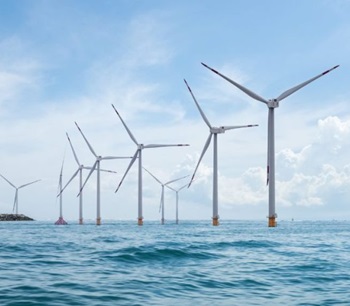 There is a fight on the open seas in Texas’ Gulf, not between sailors and pirates but between two of America’s most ambitious offshore wind producers. BlackRock-backed RWE Offshore US Gulf LLC recently asked the Bureau of Ocean Energy Management (BOEM) to pressure its competitor, Hecate Energy Gulf Wind LLC, to shell out big bucks to compensate Texas fishermen for potential damage to their fishing areas. “RWE urges BOEM to consider including an option for Hecate Energy –- and any future unsolicited proposals in the Gulf of Mexico — to commit funding for a Fisheries Compensatory Mitigation Fund,” the company recently said during a public comment period on a developing offshore wind project in south Texas. RWE also encouraged BOEM to require Hecate to develop a communication plan with fisheries and tribal governments. Texas’ fishing industry vigorously opposes RWE’s offshore wind projects, such as GOM WEA Option M near the TX-LA border. more, >>CLICK TO READ<< 16:14
There is a fight on the open seas in Texas’ Gulf, not between sailors and pirates but between two of America’s most ambitious offshore wind producers. BlackRock-backed RWE Offshore US Gulf LLC recently asked the Bureau of Ocean Energy Management (BOEM) to pressure its competitor, Hecate Energy Gulf Wind LLC, to shell out big bucks to compensate Texas fishermen for potential damage to their fishing areas. “RWE urges BOEM to consider including an option for Hecate Energy –- and any future unsolicited proposals in the Gulf of Mexico — to commit funding for a Fisheries Compensatory Mitigation Fund,” the company recently said during a public comment period on a developing offshore wind project in south Texas. RWE also encouraged BOEM to require Hecate to develop a communication plan with fisheries and tribal governments. Texas’ fishing industry vigorously opposes RWE’s offshore wind projects, such as GOM WEA Option M near the TX-LA border. more, >>CLICK TO READ<< 16:14
US offshore wind projects pelted with suits to end, delay progress
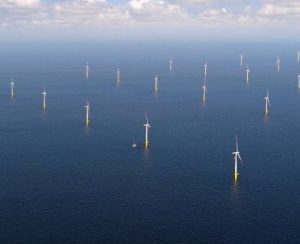 There are 13 cases pending in federal courts targeting offshore wind projects, according to the American Clean Power Association, an offshore wind trade group. An undetermined number of additional lawsuits is active in state courts, they said. Robin Shaffer is president of Protect Our Coast NJ, a citizens group that has filed numerous lawsuits in New Jersey against two offshore projects currently or previously proposed. Shaffer said his group was at least partly responsible for scuttling two New Jersey wind farms proposed by Orsted that the Danish wind giant scrapped in October, saying they were no longer financially workable. more, >>CLICK TO READ<< 08:57
There are 13 cases pending in federal courts targeting offshore wind projects, according to the American Clean Power Association, an offshore wind trade group. An undetermined number of additional lawsuits is active in state courts, they said. Robin Shaffer is president of Protect Our Coast NJ, a citizens group that has filed numerous lawsuits in New Jersey against two offshore projects currently or previously proposed. Shaffer said his group was at least partly responsible for scuttling two New Jersey wind farms proposed by Orsted that the Danish wind giant scrapped in October, saying they were no longer financially workable. more, >>CLICK TO READ<< 08:57
Commercial fishing vessel runs aground in Auckland’s Ōrākei Marina after refueling
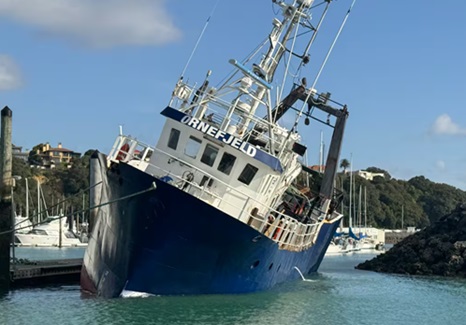 A commercial fishing vessel has run aground in Auckland’s Ōrākei Marina after its skipper missed tide timings while refueling. “The skipper was just looking to get some cheap fuel at Gull and then he went downstairs and had a cup of tea and missed his timing,” he said. Snashall said this vessel in particular had a “huge” boat draft – the minimum amount of water required to float the vessel without it touching the bottom. Photos, more, >>CLICK TO READ<< 06:57
A commercial fishing vessel has run aground in Auckland’s Ōrākei Marina after its skipper missed tide timings while refueling. “The skipper was just looking to get some cheap fuel at Gull and then he went downstairs and had a cup of tea and missed his timing,” he said. Snashall said this vessel in particular had a “huge” boat draft – the minimum amount of water required to float the vessel without it touching the bottom. Photos, more, >>CLICK TO READ<< 06:57
Filipino fisherman adrift at sea for 47 days, has been rescued
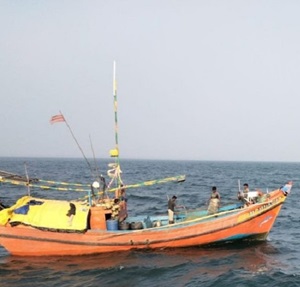 A 49-year-old Filipino fisherman who spent 47 days drifting aimlessly at sea has been rescued after surviving on rainwater, coconuts and fish, the Philippine Coast Guard said on Friday. Robin Dejillo, a native of Quezon province, southeast of Manila, has been reported missing since August 4 after his boat ran out of gas while conducting a fishing venture, Xinhua news agency reported. Dejillo survived for more than a month at sea by drinking rainwater and eating fish. He was also sustained by eating coconuts floating on water. more, >>CLICK TO READ<< 10:32
A 49-year-old Filipino fisherman who spent 47 days drifting aimlessly at sea has been rescued after surviving on rainwater, coconuts and fish, the Philippine Coast Guard said on Friday. Robin Dejillo, a native of Quezon province, southeast of Manila, has been reported missing since August 4 after his boat ran out of gas while conducting a fishing venture, Xinhua news agency reported. Dejillo survived for more than a month at sea by drinking rainwater and eating fish. He was also sustained by eating coconuts floating on water. more, >>CLICK TO READ<< 10:32
Feds fund offshore wind study hoping to boost market in Atlantic Canada
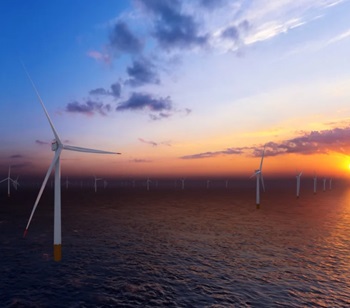 Federal funding for a pioneering offshore wind power grid study in the Canadian Maritimes should help draw big-hitting developers to the region’s first project auction next year. But commercialization of the market remains on the far horizon, says a leading industry analyst. Ottawa earlier this week awarded $6 million to Net Zero Atlantic, a low-carbon research and development hub in Nova Scotia, for the Atlantic Canada Offshore Wind Integration and Transmission Study, which aims to show how future offshore wind farms could export power to the onshore electricity network. While $6 million of the funding to Net Zero Atlantic will go toward the grid study, a further $3.25 million will be dedicated to technologies associated with fishing vessels and ferry fleets, agriculture, carbon capture, hydrogen and energy storage. more, >>CLICK TO READ<< 07:38
Federal funding for a pioneering offshore wind power grid study in the Canadian Maritimes should help draw big-hitting developers to the region’s first project auction next year. But commercialization of the market remains on the far horizon, says a leading industry analyst. Ottawa earlier this week awarded $6 million to Net Zero Atlantic, a low-carbon research and development hub in Nova Scotia, for the Atlantic Canada Offshore Wind Integration and Transmission Study, which aims to show how future offshore wind farms could export power to the onshore electricity network. While $6 million of the funding to Net Zero Atlantic will go toward the grid study, a further $3.25 million will be dedicated to technologies associated with fishing vessels and ferry fleets, agriculture, carbon capture, hydrogen and energy storage. more, >>CLICK TO READ<< 07:38
MPAs and windfarm proposals labelled an ‘absolute attack’ on the fishing industry
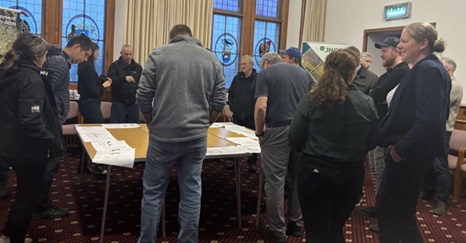 Fisherman have condemned plans to introduce MPAs (marine protected areas) and an offshore windfarm on the isles fishing grounds – with a lack of “evidence” at the forefront of concerns. A public exhibition of the Stoura Offshore Windfarm was held on Thursday at Shetland Museum followed by a drop-in consultation yesterday at Lerwick Town Hall to respond to the MPA proposals. Fears for the future of the fishing industry were heard at both events this week. Skerries whitefish fisherman James Anderson said the MPA proposals will “not do any good at all” and continuously closing off areas poses a significant threat to the sector. more, >>CLICK TO READ<< 06:34
Fisherman have condemned plans to introduce MPAs (marine protected areas) and an offshore windfarm on the isles fishing grounds – with a lack of “evidence” at the forefront of concerns. A public exhibition of the Stoura Offshore Windfarm was held on Thursday at Shetland Museum followed by a drop-in consultation yesterday at Lerwick Town Hall to respond to the MPA proposals. Fears for the future of the fishing industry were heard at both events this week. Skerries whitefish fisherman James Anderson said the MPA proposals will “not do any good at all” and continuously closing off areas poses a significant threat to the sector. more, >>CLICK TO READ<< 06:34
Bay of Fundy fishermen see uptick in poaching patrols
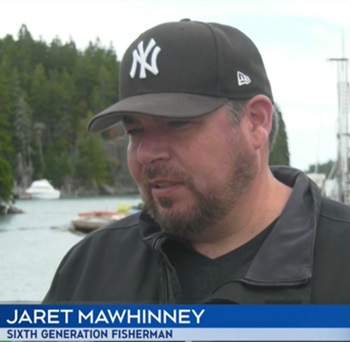 Many lobster fishermen say they have seen an uptick in Coast Guard patrols in the Bay of Fundy less than a week after a protest against poaching in Saint Andrews, N.B. “Last spring I didn’t see any fisheries on the water at all,” said Jaret Mawhinney, a sixth-generation fisherman. “Last fall I think I might have saw one boat and that was probably the first day. After that I never really seen too much.” Mawhinney notes lobster catches have dropped in recent years, something he attributes to poaching. Last Saturday, roughly 50 fishing boats from Lobster Fishing Area 36 – which covers waters from Alma to the American border – docked in Saint Andrews to peacefully protest illegal fishing and what they see as a lack of enforcement by the government. Video more, >>CLICK TO READ<< 19:32
Many lobster fishermen say they have seen an uptick in Coast Guard patrols in the Bay of Fundy less than a week after a protest against poaching in Saint Andrews, N.B. “Last spring I didn’t see any fisheries on the water at all,” said Jaret Mawhinney, a sixth-generation fisherman. “Last fall I think I might have saw one boat and that was probably the first day. After that I never really seen too much.” Mawhinney notes lobster catches have dropped in recent years, something he attributes to poaching. Last Saturday, roughly 50 fishing boats from Lobster Fishing Area 36 – which covers waters from Alma to the American border – docked in Saint Andrews to peacefully protest illegal fishing and what they see as a lack of enforcement by the government. Video more, >>CLICK TO READ<< 19:32
Thomas Elias: Gov. Newsom committing to big wind power projects risky right now
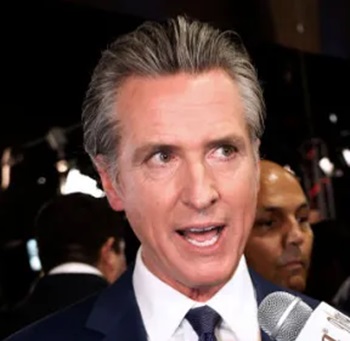 There weren’t many causes Gov. Gavin Newsom pushed harder during the just-concluded state legislative session than offshore wind power, something that has been tried in only a few places around America. For some in the California Legislature, including state Senate President Mike McGuire, D-Healdsburg, this seems an easy way to modernize the state’s electric grid without risking much pollution, taking advantage of an inexhaustible natural resource — winds that often gust at 40 mph or more. However, now it’s time for Newsom to go slow before committing California electric customers (who always pay for new generating facilities via their monthly bills) to fund this largely untried renewable energy source. If adopted, a plan to build enough offshore windmills to fill about 6% of California’s electric needs would be America’s largest commitment to offshore wind power. There is not yet any offshore wind power along the Pacific Coast, but yes, there is offshore wind power on the Atlantic Coast. There’s a small (five-turbine) project off Block Island, Rhode Island. Also, there are a few windmills off Virginia and others off Massachusetts’ Nantucket Island. more, >>CLICK TO READ<< 12:22
There weren’t many causes Gov. Gavin Newsom pushed harder during the just-concluded state legislative session than offshore wind power, something that has been tried in only a few places around America. For some in the California Legislature, including state Senate President Mike McGuire, D-Healdsburg, this seems an easy way to modernize the state’s electric grid without risking much pollution, taking advantage of an inexhaustible natural resource — winds that often gust at 40 mph or more. However, now it’s time for Newsom to go slow before committing California electric customers (who always pay for new generating facilities via their monthly bills) to fund this largely untried renewable energy source. If adopted, a plan to build enough offshore windmills to fill about 6% of California’s electric needs would be America’s largest commitment to offshore wind power. There is not yet any offshore wind power along the Pacific Coast, but yes, there is offshore wind power on the Atlantic Coast. There’s a small (five-turbine) project off Block Island, Rhode Island. Also, there are a few windmills off Virginia and others off Massachusetts’ Nantucket Island. more, >>CLICK TO READ<< 12:22
FISHERMEN OPPOSE INDUSTRIALISATION OF OUR OCEANS
 “The New England Fishermen’s Stewardship Association (NEFSA) remains steadfast in its opposition to the industrialisation of our oceans, despite the shrinking of the original proposed lease area. The final eight lease areas encompass a total of 827,886 acres in the Gulf of Maine and pose an existential threat to all marine species, habitat, and to the livelihoods of current and future generations of sustainable fishermen upon whom their communities rely on for survival. The six lase areas in the southern Gulf of Maine comprise a Great Wall of Windmills that threaten mariners and the marine environment. more, >>CLICK TO READ<< 06:33
“The New England Fishermen’s Stewardship Association (NEFSA) remains steadfast in its opposition to the industrialisation of our oceans, despite the shrinking of the original proposed lease area. The final eight lease areas encompass a total of 827,886 acres in the Gulf of Maine and pose an existential threat to all marine species, habitat, and to the livelihoods of current and future generations of sustainable fishermen upon whom their communities rely on for survival. The six lase areas in the southern Gulf of Maine comprise a Great Wall of Windmills that threaten mariners and the marine environment. more, >>CLICK TO READ<< 06:33Glass fibers – the rest of the story????? by Nils E. Stolpe/FishNet-USA
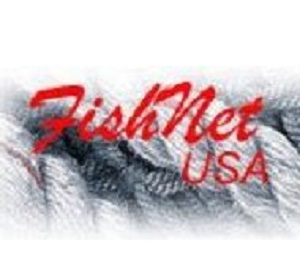 Floating around (sorry!) is the surprising story that the fiberglass that is being donated gratis to our oceans by the offshore wind industry is harmless because the fibers that make it up are chemically inert. Reassuring, isn’t it? Well, in words made immortal by George and Irwin Gershwin in Porgy and Bess, “it ain’t necessarily so.” To put those immortal words in the proper real world (not NOAA or BOEM scientist’s) perspective, the asbestos fibers that are still being used legally in a whole bunch of manufacturing processes today are chemically inert on their own. You can chomp on and swallow asbestos fibers to your heart’s content, as long as they stay in large chunks, with no ill effects. According to the National Library of Medicine “asbestos fibers are basically chemically inert, or nearly so. They do not evaporate, dissolve, burn, or undergo significant reactions with most chemicals.” So what happens when a huge fiberglass rotor on an offshore generator (300+ feet long and still enlarging as wind generators become larger-and more efficient) delaminates and takes a dive into one of our oceans? more, >>CLICK TO READ<< 15:52
Floating around (sorry!) is the surprising story that the fiberglass that is being donated gratis to our oceans by the offshore wind industry is harmless because the fibers that make it up are chemically inert. Reassuring, isn’t it? Well, in words made immortal by George and Irwin Gershwin in Porgy and Bess, “it ain’t necessarily so.” To put those immortal words in the proper real world (not NOAA or BOEM scientist’s) perspective, the asbestos fibers that are still being used legally in a whole bunch of manufacturing processes today are chemically inert on their own. You can chomp on and swallow asbestos fibers to your heart’s content, as long as they stay in large chunks, with no ill effects. According to the National Library of Medicine “asbestos fibers are basically chemically inert, or nearly so. They do not evaporate, dissolve, burn, or undergo significant reactions with most chemicals.” So what happens when a huge fiberglass rotor on an offshore generator (300+ feet long and still enlarging as wind generators become larger-and more efficient) delaminates and takes a dive into one of our oceans? more, >>CLICK TO READ<< 15:52
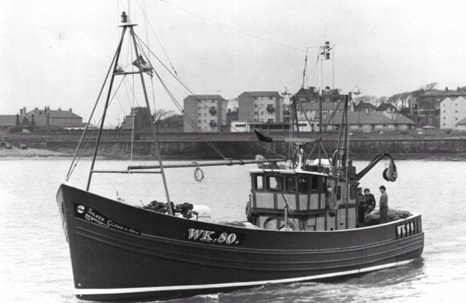
50 years and counting: Silver Cloud II WK 80
George Carter was born and bred in the Caithness village of Lybster, by the harbour, and he fished straight out of school, getting his skipper’s ticket in 1956 at the age of 21. His father Hugh was a fish curer with small creel boat, and his grandfather had always been keen to say that he’d never earned a penny on dry land! The Carter family have gone down in history with two record catches with the seine-net. In 1964, George’s brother Jack landed a record of 240 boxes of cod in a single drag in the Freswick grounds in the north of the Moray Firth aboard the Maid of Honour WK 30, which was built in 1950 by David Howarth of Scalloway (of Shetland Bus fame). Then George, aboard the Silver Cloud, landed 378 boxes with two drags in 1966. The 47ft Silver Cloud WK 207 was George’s first boat, which he purchased in 1962. That vessel was built at Bolson’s yard in Poole as an Admiralty MFV, and by 1951 was owned by John Watt of Fraserburgh, re-registered as FR 313. In 1952 she was sold to Tom Scott Goodlad of Scalloway and re-registered as LK 217. Tom tragically died onboard in May 1958. His brother John then took the boat. more, >>CLICK TO READ<< 07:38
Against the Wind: Questions About BOEM’s Fisheries Analysis
 The Bureau of Ocean Energy Management (BOEM) announced the final sale notice for the Gulf of Maine offshore wind project lease areas on Sept. 16. The agency shrunk the overall area by 120,000 acres, removing significant portions of the two northern leases off the coast of Maine, carving a transit lane between the two farthest-offshore southern areas, and shaving small portions off other southern areas. This decision did little to satisfy Jerry Leeman, a Harpswell, Maine-based former commercial fisherman and founder of the New England Fishermen’s Stewardship Association (NEFSA), an organization that opposes the Gulf of Maine offshore wind area. NEFSA “remains steadfast in its opposition,” wrote Leeman in a press release, “despite the shrinking of the original areas.” more, >>CLICK TO READ<< 06:22
The Bureau of Ocean Energy Management (BOEM) announced the final sale notice for the Gulf of Maine offshore wind project lease areas on Sept. 16. The agency shrunk the overall area by 120,000 acres, removing significant portions of the two northern leases off the coast of Maine, carving a transit lane between the two farthest-offshore southern areas, and shaving small portions off other southern areas. This decision did little to satisfy Jerry Leeman, a Harpswell, Maine-based former commercial fisherman and founder of the New England Fishermen’s Stewardship Association (NEFSA), an organization that opposes the Gulf of Maine offshore wind area. NEFSA “remains steadfast in its opposition,” wrote Leeman in a press release, “despite the shrinking of the original areas.” more, >>CLICK TO READ<< 06:22






